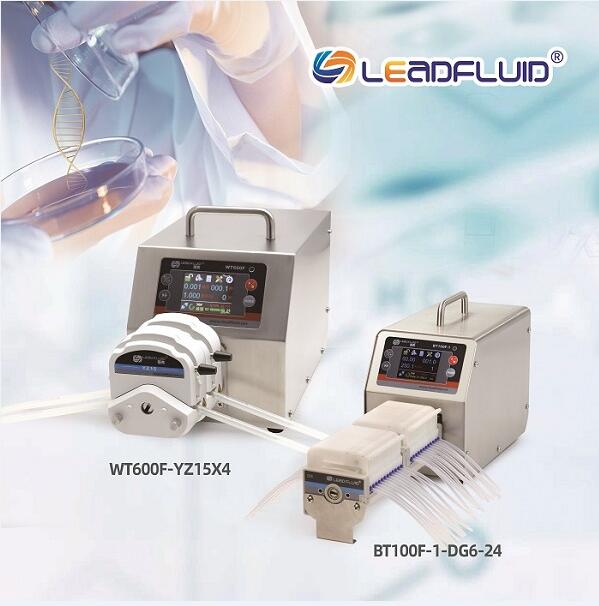Peristaltic pump has many advantages, peristaltic metering pump is a commonly used equipment in fluid transmission. It is often used in the laboratory industry, biopharmaceuticals, medical reagents, environmental testing and other industries. It can convey some sensitive, viscous, corrosive, grinding, high purity requirements, and contains certain granulate material medium.
- The fluid only touches the peristaltic pump tubing, not the pump body. The fluid is no pollution.
- High repeatability and easy control. The number of rollers in the pump head is constant, and the volume of the extrusion is constant for each revolution of the pump, so repeatability accuracy can be achieved, and the accuracy of the Lead Fluid peristaltic pump can reach 1%, so it is aimed at this advantage. Peristaltic pump is also called constant flow pump. According to different customer needs, Lead Fluid peristaltic pumps with dispensing peristaltic pump, speed variable and flow rate peristaltic pump, which are convenient for users to choose according to different conditions.
- Corrosion resistance. The peristaltic pump can transport various liquids through pump hoses of different materials without causing liquid pollution. In ordinary pumps, the parts such as the impeller are exposed to liquid, which will cause corrosion of the parts.
- Good self-priming ability. When the peristaltic pump is rotating, the pump wheel will squeeze the tubing, which will cause negative pressure at the inlet of the hose, which can realize the self-priming function. The height of the suction stroke varies with the hardness of the pump tube. Reach 5 meters, 8 meters.
- Two-way conveying. According to the design principle of the peristaltic pump, as long as the peristaltic pump roller is turned in the opposite direction, the reverse conveying function can be realized. The ordinary pump does not have this condition, unless it is installed in the reverse direction, which is quite troublesome.
- Low shearing force . Conventional pump rotation will have axial force, which will prompt the liquid to be thrown around. If the liquid contains a certain solid substance, this shearing force will cause greater damage to this substance, and the shearing force of the peristaltic pump is far lower than conventional pumps, it is very suitable for transporting liquids containing solid particles in this liquid.
- No siphon and stop valve. When the pump is conveying, as the rollers are squeezed, the liquid will flow in the direction of the rollers. Someone asked what to do if the pump is stopped and dripping occurs? In fact, there is no need to worry. The pump adds a pressure valve, and a one-way pressure valve is installed at the outlet. The valve is opened by the pressure of the pump when it is working, and the valve is naturally closed when it is stopped, thus avoiding the occurrence of dripping.
- It can run idling and dry The rotation speed of the peristaltic pump is generally within 600 rpm, which will not cause high temperature due to the excessively high rotation speed and damage the pump body. It can carry out mixed transmission of air, liquid, and solid-liquid.
- Simple maintenance. The structure of the pump is also very simple, with only three main components, which is convenient for users to disassemble and install.
- Sealing and hygienic . Only the peristaltic pump tubing is in contact with the liquid, which prevents transmission contamination and other situations.
